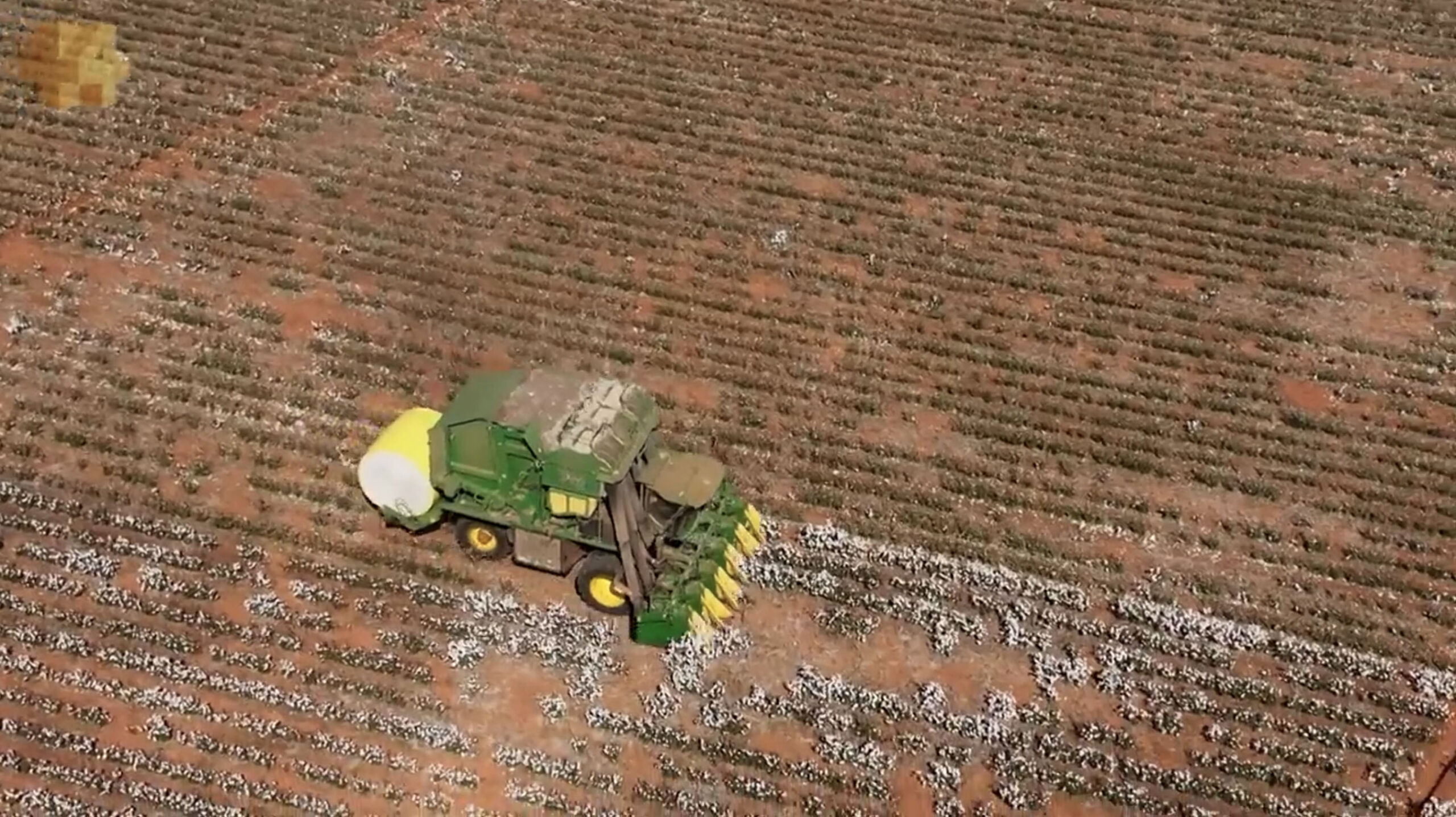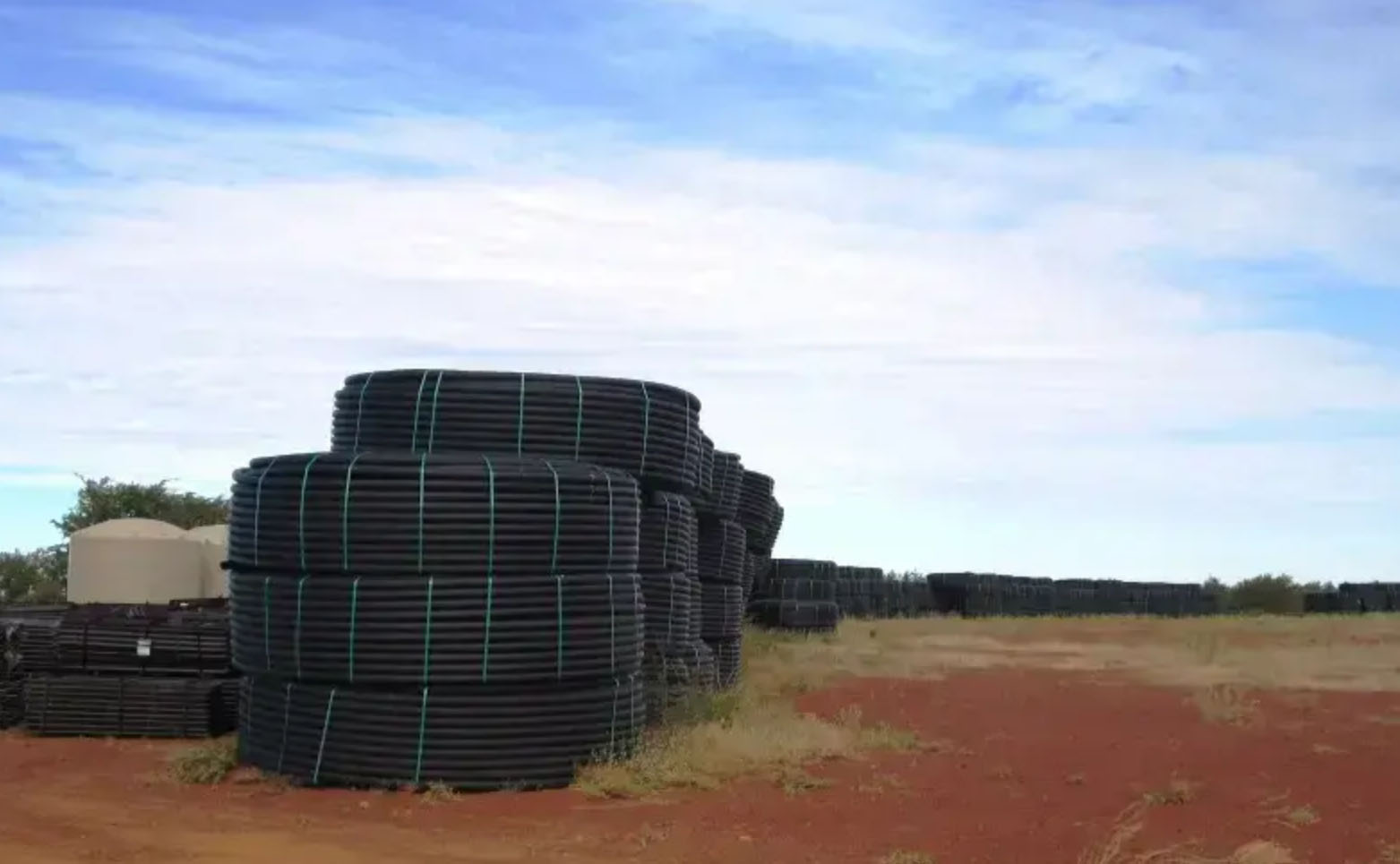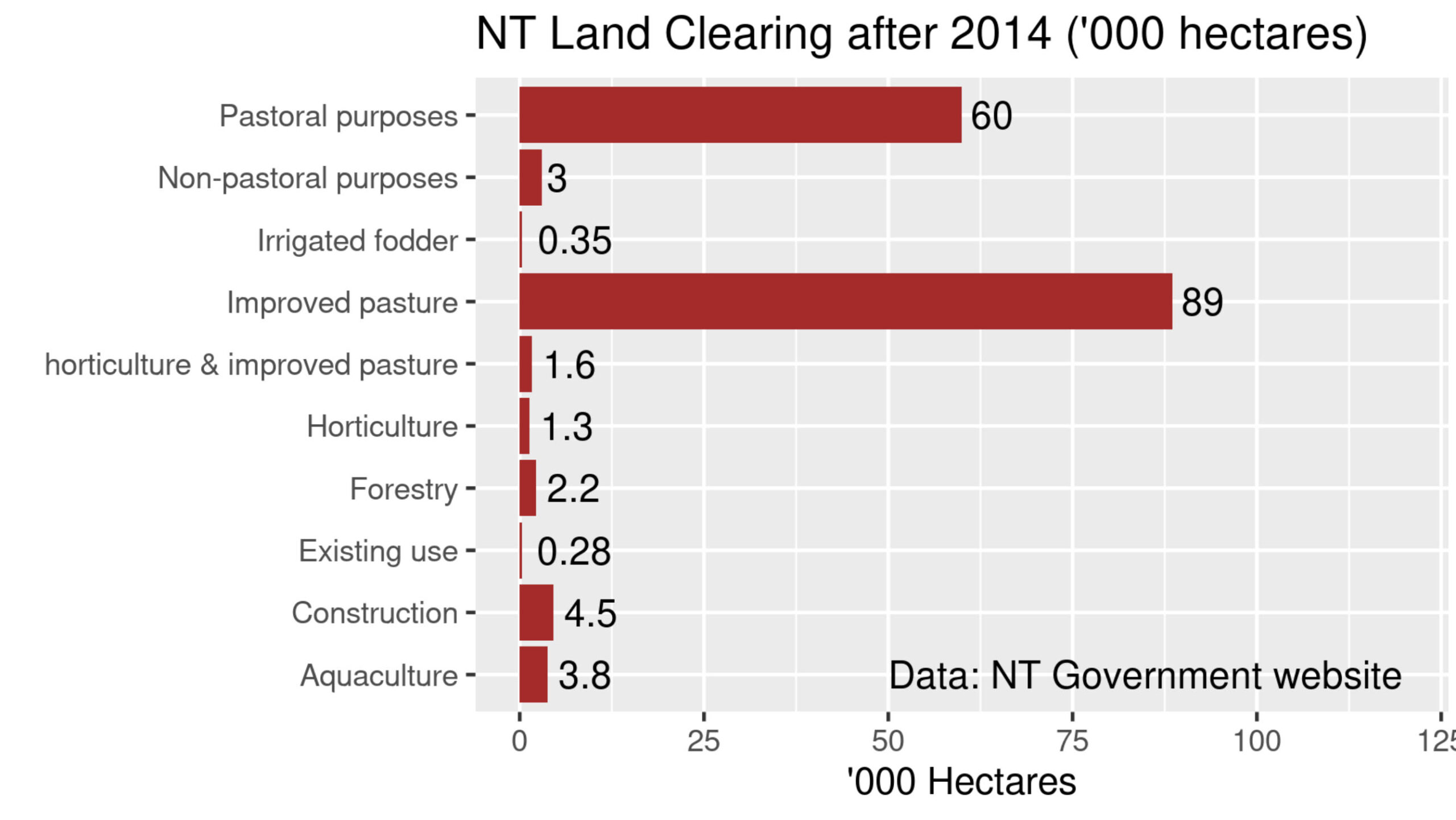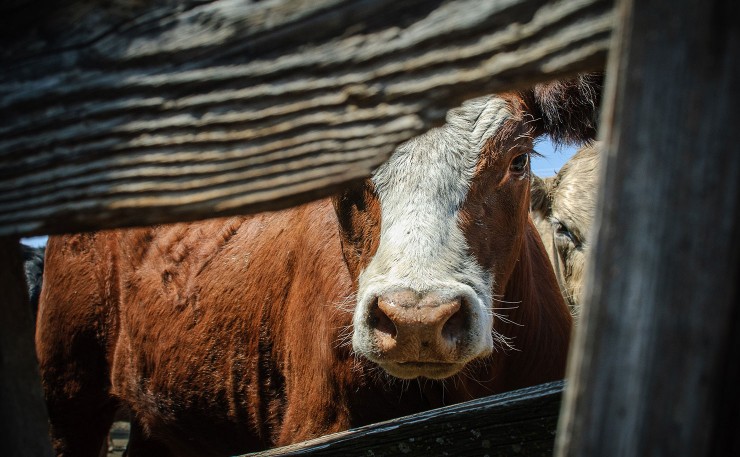A recent investigation by ABC’s Four Corners program about the growing cotton industry in the Northern Territory and its consumption of water has missed the mark… and the point. Geoff Russell explains why.
“This is cattle country.” says Angus Grigg, on the recent ABC Four Corners story, “Water Grab”. The program is about how the big villain Cotton is robbing the Northern Territory of precious water.
You’d have to ask exactly how Grigg could get it so wrong? I’ll speculate on that later, but for now I’ll just explain what’s going on: the ABC has made a total mess of it.
Grigg got close, but he missed the real story by not asking what was driving the process. Had he followed the common journalistic dictum of “follow the money”, then I’m sure he would have worked it out.

Annually, cotton in the Northern Territory is a $17 million dollar business. Cattle on the other hand, is a $345 million dollar business. That should be enough of a clue that the cattle is the dog, and cotton is its tail. Grigg seems to think that the tail is wagging the dog. If anybody is stealing the water, it’ss the cattle industry, not one of the small links in the cattle supply chain.
Grigg featured Veterinarian Samantha Phelan, reckoning that “cotton seeds I think is about 15 percent of the profit compared to the fibre….” If Grigg had bothered to check what Dr Phelan “thinks”, then the penny might have dropped for him.
Here’s how it works: the value of cotton is divided among many people. It’s a long way from the farm to Grigg’s jeans, t-shirts and bed sheets. The farmer growing the cotton, quite reasonably, only gets a smallish portion of downstream value of the products made with the lint (the fibre) by skilled people using complex processes and expensive machinery.
Thus, when a cotton grower sells both seed and lint, the seed is worth more than the lint. The relative value is about 55:45 (seed to lint), according to the analyst I just hyperlinked.

Now think about a cattle farmer buying feed. If they buy cotton seed, they pay both the farmer of that seed and any other people in the supply chain. But if they grow their own cotton? Think about it. In both cases, the cotton has to go through the processing at the gin (the machine that separates out the seed and the lint). But the farmer is in a good position to make a deal with the gin that is advantageous to both.
There is no other fodder crop that fits in so well with the cattle business. Cotton seed is high in protein and overall has about 96% digestible nutrients. So it’s no surprise that many cotton growers also run sheep and cattle. Similarly, it should now be no surprise that the cotton industry’s response to the Four Corners program is featured on the “Beef Central” website.
So Grigg got everything back to front. The driver of the water rip off in the NT, assuming there is one, isn’t cotton. It’s the cattle industry.
The Northern Territory has about 250,000 people and 1.7 million cattle; that’s over 6 head of cattle for every person. That’s by far the highest ratio of any state or territory in Australia. But their cotton production, in contrast is much lower than other states. Why? Do the math.
Look up the hectares of cotton in the NT and the yield. Then do the same with Australia as a whole. You’ll find that the yield per hectare in the NT is about half of that in the country as a whole. This is a pretty good indication that the industry is growing rain fed rather than irrigated cotton; exactly as it claimed. It really is just a small part of the cattle supply chain.
But it isn’t “cattle country”
Having got the story totally wrong, you won’t be surprised to learn that Grigg’s judgement of the NT as “cattle country” is also misleading.
The NT isn’t at all naturally friendly to cattle. If you want to raise cattle in the NT you need to dramatically modify the land, or more accurately, the distribution of water. All of this is explained courtesy of the managers of the 1 million hectare Beetaloo Station cattle farm. They aim to run 100,000 cattle on this property. But that website is a little dated, so perhaps they have already reached that target.
Here’s the basic process. Cattle won’t walk more than a few kms from a water point to find feed. So the Beetaloo people create 3.3km x 3.3 km paddocks with 170,000 litre tanks at the paddock intersection point. There is a terrific picture on the website of some of the infrastructure, massive coils of black poly-pipe literally stretching to the horizon of the photo.

They have to bury the pipes almost a metre underground to escape the impacts of the hot sun; queue lots of diesel driven diggers. They fill the tanks with water pumped from underground, queue more diesel for the pumps.
The Beetaloo website doesn’t give the size of the pumps, but they sound much bigger than the one on my water tank: “Windmills could not generate the pressure required for this [pumping]and solar-powered systems are far too costly. Despite the long distances to travel to them, the pumps are manually operated because remote electronic switching systems have been found to be unreliable.”.
But water isn’t enough. There are years and times in a year when feed is scarce. You need fodder crops also; high yield species you can grow, harvest and store. I’ll say more about this later.
So why did Griggs mess up the story so badly? I have a few theories.
ABC’s Catalyst in 2007
Back in 2007, the team of reporters at ABC’s now-defunct Catalyst Science program measured their carbon footprints. The webpage at the time said:
“Our reporters generally have higher than average footprints for food and services. As their incomes are higher than average, they tend to spend more on services like restaurants and high footprint products like red meat. These contribute strongly to their total footprints, because the ISA method measures expenditure and is sensitive to land disturbance.”
The mention of red meat was significant. The red meat industry has long been the biggest producer of greenhouse warming in Australia. Yes, even more than all our fossil fuelled electricity generation. So how come science journalists, who know this kind of thing, were chowing down on steaks and burgers? Good question. Hypocrisy over climate change is I think only defensible if you view decarbonisation as a 100 percent Government task (assuming you don’t give a toss about the animals you need to have killed). But Governments love it when you blame your own habits rather than their poor policies.
So what do Angus and the crew eat at Four Corners? Does their diet influence their natural choice of villain?
So much for theory 1. Next we have an historical theory.
A bloody business
Back in 2011, Four Corners did a brilliant documentary on the live cattle trade to Indonesia: A bloody business. It exposed the lies of Meat and Livestock Australia (MLA). But MLA didn’t just lie. They hired people to make a professionally scripted and produced video to deliberately and systematically misinform Australian cattle producers about what their cattle endured at the end of their little trip to Indonesia.
As far as I can tell, Four Corners have given the cattle industry a very wide berth since then. Why? Australia signed up recently for the Global Methane Pledge. This is an undertaking to reduce methane emissions by 30% by 2030. Given that the lion’s share of our methane emissions come from cattle, you’d have thought that would make a good story.
They could ask, “How will we do it?”, “How much will it cost?” “Is the cattle industry going to derail any plans to send it down the same pathway as coal?” There are plenty of angles. So why has nothing been done? Did MLA give the ABC a hard time back in 2011? Are they scared to tackle the cattle industry again? Or is this just personal love of burgers getting in the way of journalistic professionalism?
The great beef land grab in the NT
I mentioned the need for fodder crops (like cotton) for cattle in the NT. The NT Government has a website listing the applications for clearing that have been processed since 2003. These come in two categories, Unzoned land and Pastoral land. The applications aren’t well designed for anybody wanting to work out what is happening, plenty of the descriptions of why land is being clear are vague, or the opposite, overly detailed. This makes categorisation difficult. But I’ve assembled the data and tried to sort out the reasons into a smallish number of categories. Here’s the result.

There have been about 250,000 hectares cleared as listed in applications since 2003, with about 166,000 in the past decade. The median area for “Improved pasture” or “Pastoral purposes” is about 700 hectares. The average size of a cotton farm in Australia is about 500 hectares. This is about the area that a smallish landowner can manage. There are also a few outliers in the data, with over 15,000 hectares being cleared.
The water requirements of 1.7 million cattle are enormous. Cattle producers typically argue that as long as they are using rain-fed fodder or natural growth, then their water use is minimal. That’s only a reasonable argument if you place no value on natural vegetation and the loss of its value in supporting wildlife.
Clearly, Beetaloo and many other cattle producers are actively adding water to the landscape to supplement rain. Are they pumping more water than natural processes will be able to replace? That’s an interesting question which I hope somebody is looking at.
The bottom line
The entire Australian cattle industry will eventually have to go the way of coal and tobacco, for the same two reasons; it damages the climate and causes cancer.
Of course, the same people who actively and deliberately lied about what was happening to Australian cattle in Indonesia will tell you otherwise.
Donate To New Matilda
New Matilda is a small, independent media outlet. We survive through reader contributions, and never losing a lawsuit. If you got something from this article, giving something back helps us to continue speaking truth to power. Every little bit counts.




